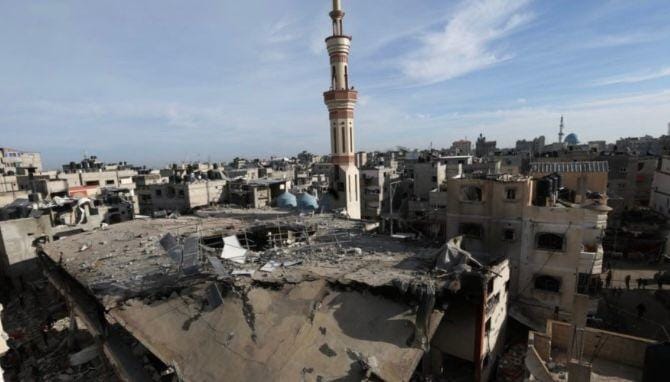Israeli Prime Minister Benjamin Netanyahu has ordered the military to prepare for a large-scale military operation in the southern Gazan city of Rafah. The United Nations (UN) has issued a warning about the potential consequences of such an operation.
Israel conducted airstrikes on Rafah on February 11, resulting in the death of at least 67 people, according to the Hamas-run health ministry. Israel claims that the airstrikes were in response to a raid that freed two hostages and were aimed at targeting Hamas fighters in the city. However, the UN states that over half of Gaza’s population has already fled the area, and Rafah is a crucial location for aid operations.
Rafah is the southernmost city in Gaza and shares borders with Egypt and Israel. Its population is currently estimated at 1.5 million Palestinians, five times more than before Israel’s strikes on the Strip. The area of Rafah covers approximately 60 square kilometers, roughly the size of the borough of Manhattan in New York.
Rafah is home to the only border crossing between the Gaza Strip and Egypt, which has been used for decades to deliver aid to Gaza. Before the conflict, hundreds of trucks would pass through this crossing daily. In the past, smuggling tunnels were also prevalent under the border, allowing goods to bypass the Israeli-Egyptian blockade. However, it is unclear how many tunnels remain, as the Egyptian army claims to have dismantled and destroyed them in recent years.
Historically, Rafah l has been a city of significance, having been conquered by various empires such as the Pharaohs, Assyrians, Greeks, and Romans. It came under British rule from 1917 until 1948 when the state of Israel was declared. Following a war with Arab nations, Rafah, along with the rest of the Gaza Strip, came under Egyptian control. In the 1967 Six-Day War, Israel occupied both Gaza and the Sinai Peninsula, including Rafah. Later, in 1979, Israel returned Sinai to Egypt as part of a peace treaty, resulting in Rafah being divided between Egypt and Israeli-occupied Gaza by a barbed wire border.
l has been a city of significance, having been conquered by various empires such as the Pharaohs, Assyrians, Greeks, and Romans. It came under British rule from 1917 until 1948 when the state of Israel was declared. Following a war with Arab nations, Rafah, along with the rest of the Gaza Strip, came under Egyptian control. In the 1967 Six-Day War, Israel occupied both Gaza and the Sinai Peninsula, including Rafah. Later, in 1979, Israel returned Sinai to Egypt as part of a peace treaty, resulting in Rafah being divided between Egypt and Israeli-occupied Gaza by a barbed wire border.

Rafah, like many parts of Gaza, is home to thousands of Palestinian refugees who were displaced during the 1948 war and their descendants. The UN reports that over half of Gaza’s population resides in Rafah, and the living conditions are described as “abysmal.” Displaced people are living on the streets, in schools, and in tents. The number of tents in Rafah has significantly increased since the start of the conflict. Medical facilities in the area are struggling due to a lack of supplies and power shortages.
Despite international condemnation, Israeli Prime Minister Netanyahu has warned of a ground offensive in Rafah. Many residents fear the potential invasion from the eastern side, near the border with Israel, and prefer to stay in the western part of the city closer to the Mediterranean Sea. The situation has raised concerns about the welfare and safety of civilians in the area.





